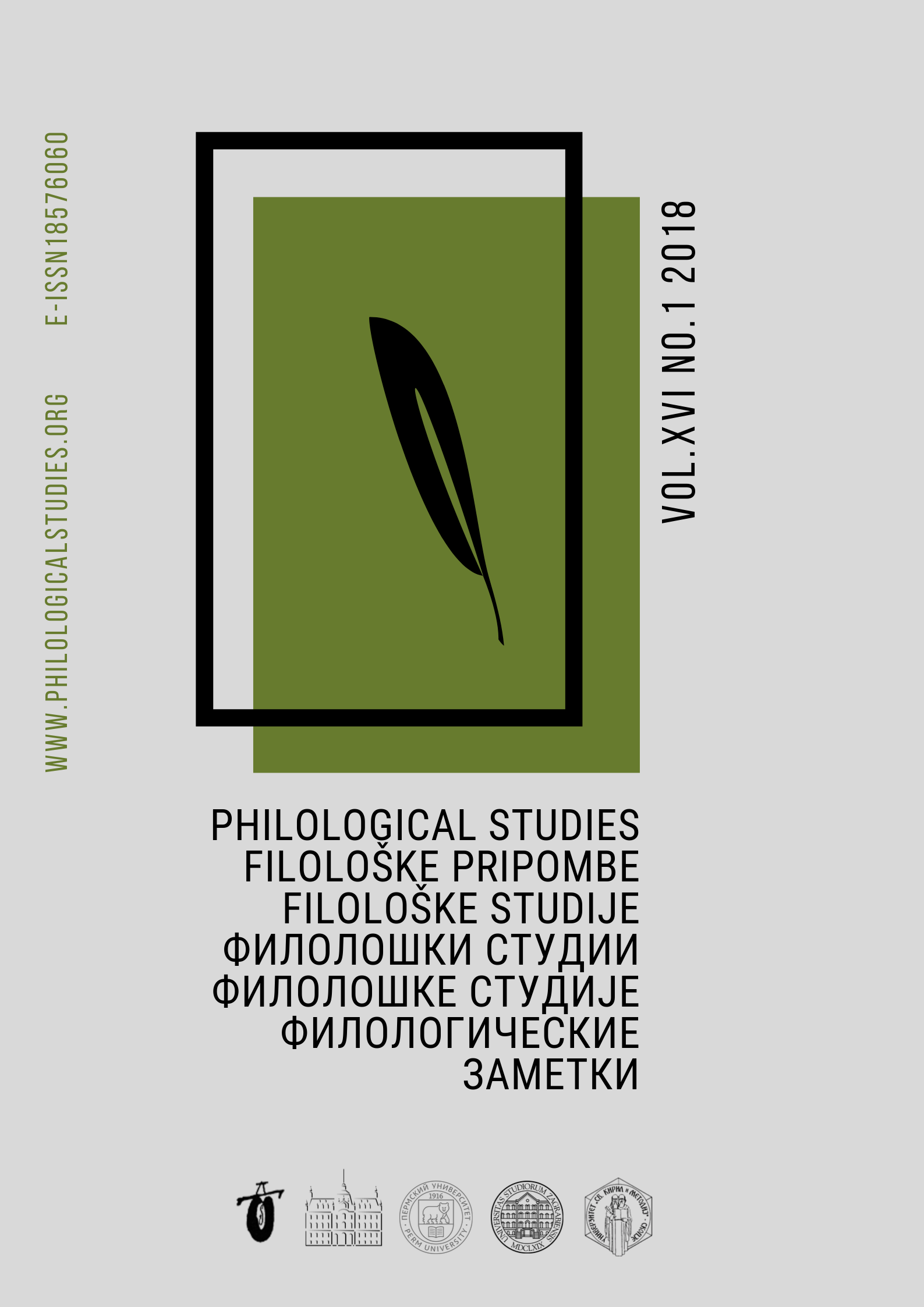THE SEMANTICS AND THE DISTRIBUTION OF THE PREFIXES IN THE LIMITATIVE ASPECTUAL CONFIGURATION IN MACEDONIAN LANGUAGE
Keywords:
limitative aspect, aspectual configuration, prefix, Macedonian language, verbsAbstract
Limitativity is a complex aspect consisting of two aspectual values: a dominant momentary aspect and a subordinate continuative one. In Macedonian, these two aspectual values can be combined in a complex limitative aspect as early as in the root of the actual word, but most frequently the continuative aspect is represented in the root, while the dominant momentary aspect is represented in the affix or in the syntactic environment. In this paper we will focus only on the semantics and the distribution of the momentary prefixes that take part in the structure: momentary prefix + root with a continuative dominant (a simple continuative aspect or a complex aspect with a continuative dominant: telic, habitual and multiplicative). Тhe prefixes which take part in the formation of this type of semantemes in Macedonian are: do-, za-, iz-, od-, po-, pre-, pri-, pro- and raz-. These prefixes denote a right-hand limit for the duration of the event expressed by the root and can be semantically defined in relation to the type of limitation. Among them, the prefix po- is the most characteristic example of the limitative confuguration, i.e. that it has the widest range of distribution, whereas the prefix raz- has the most limited distribution.
Downloads
Downloads
Published
Issue
Section
License
Philological studies © 2019. This work is licensed under a Creative Commons Attribution-Noncommercial-No Derivative Works 3.0 Unported License


